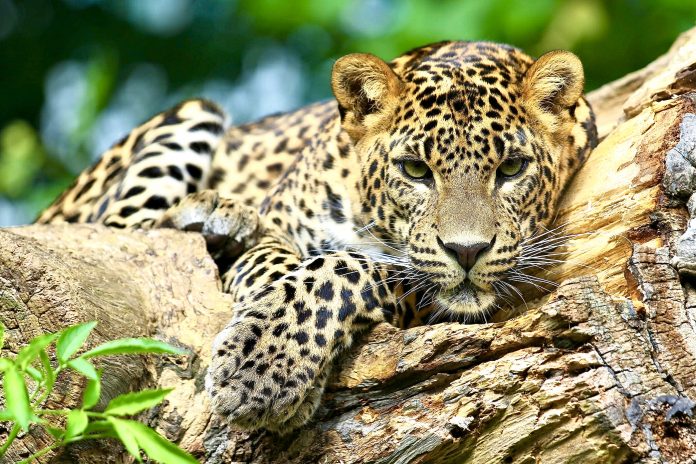Before being driven to extinction in the United States, jaguars lived for hundreds of years in the central mountains of Arizona and New Mexico. Now, a group of scientists are saying that it’s time to reintroduce the big cats back into the U.S.
U.S. government agents and private citizens hunted and poisoned jaguars for most of the 20th century. As a result of persecution here and elsewhere, jaguars were listed under the U.S. Endangered Species Act.
In a study published yesterday in the journal Conservation Science and Practice, the authors provide a prospective framework for this effort and describe “righting the wrong” done to “America’s Great Cat” in the Southwest more than 50 years ago.
Authors of the study include a diverse set of scientists from the Wildlife Conservation Society (WCS), Center for Landscape Conservation, Defenders of Wildlife, Wildlands Network, Pace University, Universidad Autónoma de Querétaro, Life Net Nature, and the Center for Biological Diversity.
In March, a separate study suggested that an area in central Arizona and New Mexico spanning 2 million acres can provide potentially suitable habitat for 90 to 150 jaguars. This area, roughly the size of South Carolina, was not considered in the 2018 US Fish and Wildlife Service Recovery Plan for the jaguar. That plan considered only habitat south of Interstate Highway 10 (an artificial boundary considering historic jaguar records just north of that) and therefore concluded there was habitat for only six jaguars in the U.S.
However, habitat destruction, transportation infrastructure, natural constrictions in the landscape, and the border wall mean that natural reestablishment of female jaguars from source populations in Mexico to this recovery region is unlikely over the next 100 years.
The authors of this week’s study conclude that reintroduction of jaguars should be examined as a viable alternative. The authors believe that restoring jaguars can be a net benefit to people, including culture, local economies, and nature, and would represent the return of an original part of the U.S. fauna. The study focuses on five dimensions of the reintroduction project: conservation rationale, history, ecological context, human context, and practical considerations.
“The jaguar lived in these mountains long before Americans did,” said Eric Sanderson, WCS Senior Conservation Ecologist and lead author of the study, in a statement. “If done collaboratively, reintroduction could enhance the economy of this region and the ecology of this incredible part of jaguar range.”
The study notes some key aspects of the reintroduction efforts to be discussed with relevant officials and the public in central Arizona and New Mexico, noting that:
-
The region is a habitat unique in all of the jaguar’s range, representing a special and valuable part of jaguar’s ecological diversity.
-
The Central Arizona and New Mexico Recovery Area (CANRA) is vast, covered with suitable vegetation, and well populated with potential prey. Given its elevation and latitude, it may provide an important climate refuge for the species in the future, though further research is required.
-
The majority of the land is managed for the public good, 68% by the U.S. Forest Service, Bureau of Land Management, and National Park Service, with several large designated wilderness areas. Only 381,000 people live in this area, primarily in towns and cities. The most important economic activities there are government expenditures, accommodation and food services, outdoor recreation, health care, and social assistance, and retail trade.
-
The mountains of central Arizona and New Mexico are part of the ancestral and reservation lands for a number of Native American Nations. Currently two Tribal nations, the White Mountain Apache and the San Carlos Apache, manage nearly 12% of the CANRA’s land area, including wildlife and ecological systems.
-
Reintroduction would replace a historic member of the species assemblage of the region. Today, we have tools to facilitate coexistence and to avoid and mitigate conflict. Reintroduction efforts, such as the Iberá Project in Argentina, have demonstrated the potential.



